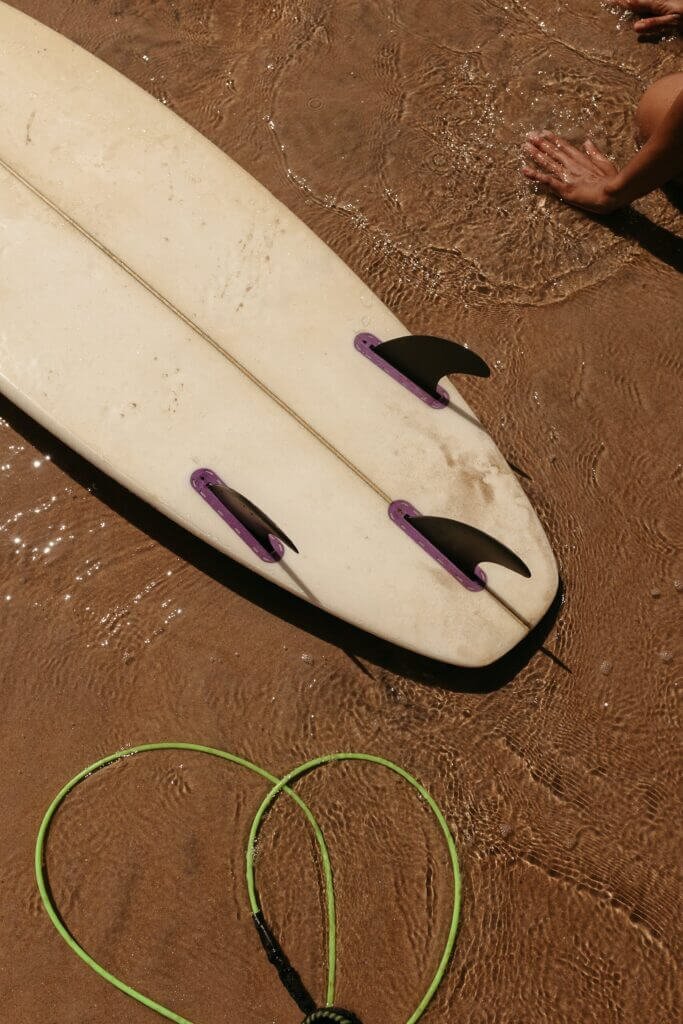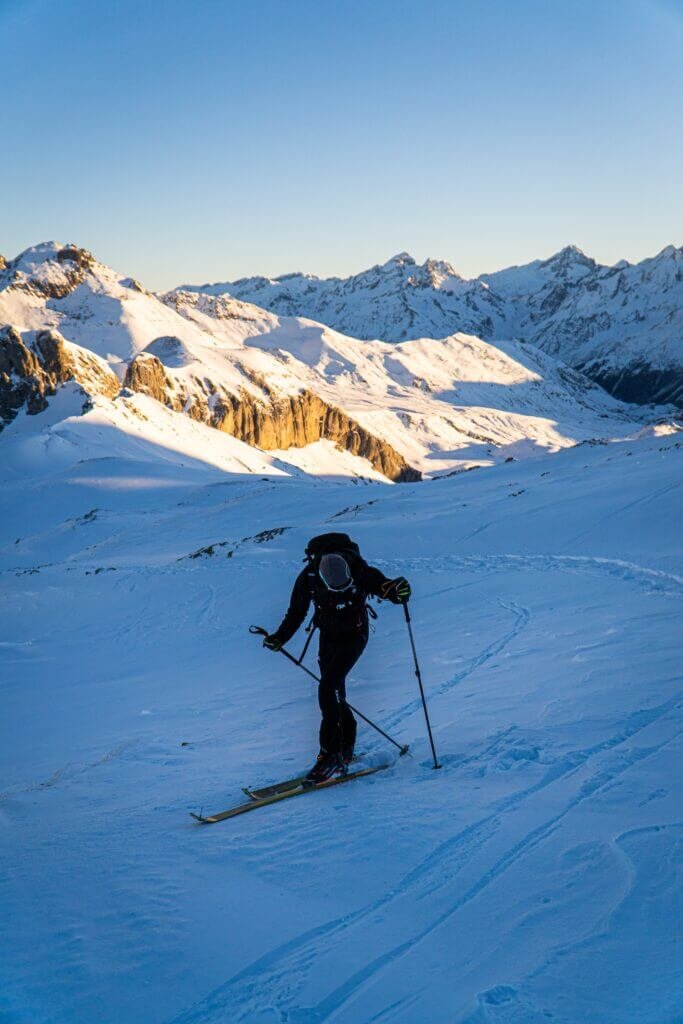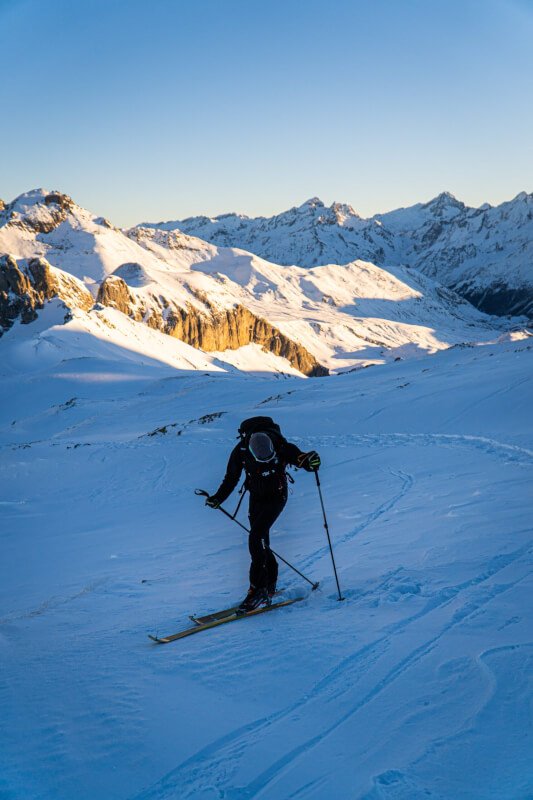Imagine you’re out in the wilderness, surrounded by nature’s beauty and tranquility, enjoying a peaceful camping trip. But suddenly, a medical emergency arises, or a severe storm approaches, or maybe a dangerous animal encroaches into your campsite. In these unexpected moments, knowing how to handle emergency situations while camping becomes crucial. This article will provide you with valuable tips and essential advice to ensure your safety and well-being when faced with unexpected emergencies in the great outdoors. So, whether you’re a seasoned camper or a first-time adventurer, read on to equip yourself with the knowledge and confidence needed to handle any emergency that may arise during your camping trips.

Recognizing Emergency Situations
Understanding Different Types of Emergencies
When camping, it’s crucial to understand the different types of emergencies that can arise. These may include medical emergencies such as injuries, allergic reactions, or illnesses, as well as environmental hazards like extreme weather conditions, animal encounters, and potential natural disasters. Additionally, food and water emergencies, equipment failures, and the need for outside assistance can also be considered emergency situations while camping. By familiarizing yourself with these possibilities, you will be better prepared to respond effectively and efficiently.
Identifying Common Emergency Signs
Recognizing common emergency signs is essential for prompt action. Signs of medical emergencies can include severe bleeding, difficulty breathing, loss of consciousness, chest pain, or other symptoms indicating a heart attack or stroke. Environmental emergencies may manifest as rapid changes in weather, approaching wildfires, or encounters with aggressive animals. In food and water emergencies, symptoms of food poisoning or severe dehydration should be monitored closely. By being aware of these signs, you can take quick action and seek appropriate help when necessary.
Assessing the Severity of the Situation
Assessing the severity of an emergency situation plays a crucial role in determining the appropriate response. While some emergencies may be minor and easily manageable, others might require immediate medical attention or evacuation. Consider the level of danger or risk involved, the potential impact on yourself and others, and the available resources and expertise to handle the situation. By accurately assessing the severity, you can prioritize actions and make informed decisions to mitigate further risks and ensure the well-being of everyone involved.
Preparing for Emergencies
Creating a Comprehensive Camping Checklist
Preparing for emergencies starts with creating a comprehensive camping checklist. This checklist should include all the essential items you need for a safe and enjoyable camping trip, such as tents, sleeping bags, cooking utensils, and clothing appropriate for various weather conditions. Additionally, it should also include emergency supplies such as first aid kits, flashlights, batteries, emergency food, water purification tablets, and a means of communication like a fully charged cell phone or a two-way radio. By having a well-prepared checklist, you can ensure that you have all the necessary equipment and supplies to handle emergencies effectively.
Packing Essential Safety Equipment
In addition to the camping essentials, it is vital to pack essential safety equipment specifically designed for emergencies. These may include items such as a fire extinguisher, a whistle, a multipurpose tool, duct tape, a flashlight with spare batteries, a compass, and a signal mirror. These items can prove invaluable in various emergency situations, from signaling for help to providing basic tools for repairs or building temporary shelters. Make sure to pack these safety equipment items in an easily accessible location within your camping gear for quick and efficient use during emergency scenarios.
Emergency Communication Plan
Having an emergency communication plan is crucial to ensure effective communication with both your camping companions and emergency services if needed. Share your plan with everyone in your group, including contact information for emergency services, local park rangers, and campground staff. Establish a designated meeting point and discuss how to communicate in case of separation or if someone requires assistance. Additionally, consider investing in a satellite phone or an emergency locator beacon that can transmit your location to rescuers if you find yourself in a remote area without cell phone reception. By developing a communication plan, you can enhance safety and improve coordination during emergencies.

Dealing with Medical Emergencies
First Aid Training and Certification
To effectively handle medical emergencies, consider attending a first aid training course and obtaining certification. These courses provide valuable knowledge and skills, including CPR (cardiopulmonary resuscitation), treating wounds, splinting fractures, managing allergic reactions, and administering basic life support. By gaining this training and certification, you will be better equipped to assess and provide immediate care in medical emergency situations until professional help arrives.
Building a First Aid Kit
A well-stocked first aid kit is an essential item for any camping trip. It should include items such as adhesive bandages, sterile gauze pads, antiseptic wipes, tweezers, scissors, adhesive tape, disposable gloves, pain relievers, antihistamines, blister treatment, and any necessary personal medications. Familiarize yourself with the use of each item and regularly check the kit for expired or depleted supplies. Additionally, consider carrying a first aid manual that provides step-by-step instructions for various medical emergencies. By having a properly stocked first aid kit, you can quickly and effectively address common camping injuries and medical situations.
Addressing Common Camping Injuries
Camping injuries can range from minor cuts and scrapes to more severe conditions that require immediate attention. Be prepared to address common injuries such as burns, sprains, insect bites, allergic reactions, and heat-related illnesses. Promptly clean and dress wounds, immobilize sprained joints, apply cold compresses to reduce swelling, and administer necessary medications based on the severity of the injury. Remember to remain calm and reassure the injured person while providing them with the necessary care.
Administering Basic Life Support (CPR)
In critical situations where someone’s life is at risk, it’s essential to be prepared to administer basic life support, including CPR, until professional help arrives. This skill can mean the difference between life and death. CPR involves chest compressions and rescue breaths to maintain blood flow and provide oxygen to the individual in cardiac arrest. Consider taking a CPR course to become proficient in this life-saving technique. Remember to stay calm and follow the steps taught in your training to maximize the chances of a positive outcome.
Handling Environmental Hazards
Identifying Potential Hazards
When camping, it’s important to be aware of potential environmental hazards in your surroundings. These can include poisonous plants, venomous snakes or insects, unstable terrain, fast-changing weather patterns, and bodies of water with strong currents. Take the time to familiarize yourself with the local flora and fauna, research potential hazards specific to the area, and remain vigilant during your camping trip. By recognizing potential hazards, you can take precautionary measures and avoid or minimize their impact on your safety.
Managing Extreme Weather Conditions
Extreme weather conditions pose significant risks during camping trips. Be prepared for unexpected changes in weather by monitoring weather forecasts before leaving and bringing appropriate clothing and gear. Take shelter in a sturdy structure or your vehicle if lightning or severe storms are approaching. In case of sudden drops in temperature, ensure you have adequate clothing and insulation to stay warm. When camping in hot climates, drink plenty of water, seek shade during peak sun hours, and be mindful of signs of heat exhaustion or heat stroke. Stay informed and adjust your plans accordingly to mitigate the risks associated with extreme weather conditions.
Dealing with Animal Encounters
Encountering wildlife can be both exciting and potentially dangerous. To minimize risks, understand how to coexist with animals in their natural habitats. Store food securely and dispose of waste properly to avoid attracting animals to your campsite. Keep a safe distance if you encounter large mammals, and never approach or feed them. Familiarize yourself with local wildlife habits and ways to deter unwanted attention, such as making noise or using bear-resistant food containers. By respecting wildlife and understanding their behaviors, you can minimize the chances of negative encounters while enjoying the beauty of nature.
Avoiding Natural Disasters
Natural disasters like floods, earthquakes, and wildfires can occur unpredictably. Stay informed about the potential risks in the camping area and be prepared to respond accordingly. If you are in an area prone to flooding, set up camp on higher ground. In earthquake-prone regions, secure heavy objects and be aware of safe areas for shelter. If wildfires are a concern, observe fire safety guidelines, regularly check for fire bans or restrictions, and know evacuation routes. Follow instructions from park rangers or local authorities and prioritize your safety and the safety of others.

Managing Food and Water Emergencies
Ensuring Safe Water Sources
Safe water sources are essential for staying hydrated and preventing illnesses while camping. If you are unsure about the water sources in the area, it’s best to treat all water before consuming it. Boiling water for at least one minute or using water purification tablets or filters can help eliminate harmful bacteria and parasites. Avoid drinking water from stagnant sources, such as puddles or ponds, and store your treated water in clean containers to prevent recontamination. By ensuring safe water sources, you reduce the risk of waterborne illnesses during your camping trip.
Food Safety and Hygiene Practices
Maintaining proper food safety and hygiene practices is crucial to prevent foodborne illnesses while camping. Store perishable food in coolers with ice or frozen gel packs, and keep them separate from raw meats to avoid cross-contamination. Use a food thermometer to ensure proper cooking temperatures, especially for meats. Wash your hands thoroughly with soap and water before handling food and after using the restroom. Practice good hygiene by using separate cutting boards for raw and cooked foods and washing utensils properly. By following these practices, you can enjoy safe and healthy meals during your camping experience.
Preventing Food Poisoning
Food poisoning can quickly ruin a camping trip. To prevent it, pay attention to the storage and handling of food. Keep perishable foods refrigerated until ready to cook or consume. Marinate meats in the refrigerator and discard any leftover marinades that have come into contact with raw meat. Avoid eating raw or undercooked meats, eggs, or seafood. Consume cooked food promptly and avoid leaving it at room temperature for extended periods. Remember to clean utensils and dishes properly to avoid cross-contamination. By taking these precautions, you can minimize the risk of food poisoning and enjoy your meals without worry.
Handling Food Allergies and Reactions
If you or anyone in your camping group has food allergies, it’s crucial to plan accordingly and be prepared for possible allergic reactions. Take note of allergens commonly found in camping meals, and carefully read food labels or inquire about ingredients when purchasing foods. Pack suitable alternatives or substitutes to ensure everyone can enjoy meals safely. If an allergic reaction occurs, administer antihistamines if available, and seek medical assistance immediately if symptoms worsen. By being prepared and proactive, you can provide a safe camping experience for everyone involved.
Navigating Equipment Failures
Inspecting and Maintaining Camping Gear
Regularly inspecting and maintaining your camping gear is essential for its optimal performance and to prevent unexpected failures. Before each trip, check tents, sleeping bags, and other equipment for damage or wear and tear. Repair or replace any damaged components. Ensure the functioning of camping stoves, lanterns, and other essential tools by cleaning and testing them. Taking proactive measures to maintain your gear reduces the chances of equipment failures during your camping adventure.
Dealing with Tent or Shelter Damage
In the event of tent or shelter damage while camping, it is important to stay calm and assess the situation. Take immediate action to mitigate further damage or ensure alternative shelter. Carry a tent repair kit with adhesive patches, spare tent poles, and extra cordage to make temporary repairs. If necessary, improvise by using tarps or natural materials to create a makeshift shelter. Remember to prioritize your safety and address the damages promptly to maintain a comfortable camping experience.
Repairing and Improvising Equipment
Equipment failures can occur unexpectedly, but with a little creativity and resourcefulness, you can often find temporary solutions. Pack a multi-tool, duct tape, and zip ties as part of your camping gear to assist with repairs. These items can be invaluable when faced with gear malfunctions such as broken tent zippers, torn backpack straps, or detached hiking boot soles. By improvising and making temporary repairs, you can continue enjoying your camping trip while awaiting permanent solutions or assistance.
Overcoming Navigation Issues
Getting lost or facing navigation issues can quickly turn a camping trip into an emergency situation. Therefore, it’s crucial to have the necessary skills to navigate the wilderness safely. Familiarize yourself with topographic maps and compass navigation before setting out on your trip. Carry a GPS device or a smartphone app with offline maps as a backup. If you find yourself lost, stay calm, retrace your steps if possible, and use natural landmarks or your navigational tools to find your way back to safety. Proper preparation and navigation skills go a long way in preventing and resolving navigation emergencies.
Finding Help and Seeking Assistance
Understanding Emergency Phone Numbers
Before embarking on a camping trip, research and familiarize yourself with the local emergency phone numbers at your specific destination. In addition to the general emergency number, identify numbers for local search and rescue teams, park rangers, and other relevant emergency services. Add these numbers to your emergency contact list and ensure everyone in your group has access to them. By understanding emergency phone numbers, you can swiftly contact the appropriate authorities for assistance if needed.
Identifying Local Emergency Services
Knowing the location and contact information of local emergency services is crucial for quick access to help when required. Research local hospitals, clinics, and urgent care facilities near your camping area in case of a medical emergency. Additionally, familiarize yourself with the nearest fire stations and police stations. Being aware of these resources ensures that you can quickly seek assistance in any emergency situation that arises.
Contacting Park Rangers or Campground Staff
When camping in a designated park or campground, contacting park rangers or campground staff can be a valuable option in case of emergencies. They are typically trained to handle various situations and can provide guidance, assistance, or connect you with the appropriate resources. Make note of the campground or park office location and phone number for easy access. During an emergency, remain calm and provide clear and concise information to the staff to ensure the most efficient response to your situation.
Self-Reliance and Survival Techniques
Building Outdoor Survival Skills
Developing outdoor survival skills is essential to increasing your self-reliance while camping. Skills like fire building, shelter construction, water sourcing and purification, and foraging for food can be invaluable in emergency situations. Educate yourself through books, online resources, or attending survival courses to learn and practice these skills. By building survival skills, you gain the confidence and knowledge to manage challenging situations and increase your chances of survival in the wilderness.
Fire Building and Campsite Safety
Fire building is a fundamental skill for camping, providing warmth, cooking capabilities, and signaling for help. Ensure you are familiar with fire safety guidelines, such as building fires in designated fire rings or pits, keeping a safe distance from flammable materials, and completely extinguishing fires before leaving the campsite. Follow Leave No Trace principles by using fallen wood or obtaining firewood locally. By practicing responsible fire building and campsite safety, you decrease the risk of wildfires and minimize the likelihood of emergencies caused by fire accidents.
Navigating in Wilderness
Navigational skills are crucial for safely navigating the wilderness. Learn to read topographic maps, use a compass, and understand the terrain you will be exploring. Plan your routes in advance and inform someone of your itinerary or share it with your camping companions. Stay on designated trails, observe landmarks, and be mindful of your surroundings. By honing your navigation skills, you can confidently explore the wilderness while minimizing the chances of getting lost or encountering significant navigation challenges.
Emergency Signaling and Rescue Techniques
Knowing emergency signaling and rescue techniques can save lives in critical situations. Carry a whistle, mirror, or reflective material to attract attention in case of an emergency. Establish visual signals using rocks, branches, or other readily available materials to guide rescuers to your location. Learn distress signals, such as waving both arms or using three short whistle bursts, to indicate that you require immediate assistance. Be prepared to persistently signal for help and stay in a visible location until rescuers arrive. By understanding and employing these techniques, you increase the chances of being located swiftly during emergencies.
Creating an Emergency Plan
Developing an Emergency Action Plan
Creating an emergency action plan ensures that everyone in your camping group knows what to do in various emergency situations. Discuss and establish protocols for responding to medical emergencies, severe weather conditions, equipment failures, and other potential emergencies. Assign tasks, establish communication procedures, and designate meeting points or rendezvous locations. Regularly review and practice the emergency action plan to ensure everyone is confident and familiar with their roles and responsibilities.
Communicating Plan to Fellow Campers
Once your emergency action plan is established, communicate it clearly to each member of your camping group. Ensure that everyone understands their roles and responsibilities in different emergency scenarios. Emphasize the importance of following the plan and remaining calm during stressful situations. Discuss any potential changes or updates to the plan based on the specific camping location or individual needs. By effectively communicating the emergency plan, you promote a sense of readiness and empower everyone to respond effectively in emergencies.
Assigning Roles and Responsibilities
Assign specific roles and responsibilities to each member of your camping group within the emergency action plan. Designate someone as the primary first aid provider, another as the communication coordinator, and others as navigators or equipment repair experts. Clearly outline the tasks each person is responsible for in emergency situations. By dividing responsibilities, you can efficiently handle emergencies and ensure that each aspect is adequately addressed without unnecessary duplication of efforts.
Remaining Calm and Composed
Maintaining a Positive Mental Attitude
Maintaining a positive mental attitude is crucial in emergency situations. The ability to stay calm and composed directly impacts decision-making and response effectiveness. Remember that panicking or becoming overwhelmed can hinder your ability to think clearly, communicate effectively, and address the situation at hand. Focus on controlling your emotions, breathing deeply, and reminding yourself that you have prepared and are equipped to handle emergencies. By maintaining a positive mental attitude, you can effectively navigate through challenges and provide support to others during stressful situations.
Stress Management and Coping Strategies
Stress management and coping strategies play a vital role in staying composed during emergencies. Deep breathing exercises, counting to ten, and engaging in calming activities like meditation or yoga can help reduce stress and anxiety. Supportive interpersonal communication within the camping group can provide a sense of unity and shared responsibility. If needed, take breaks to rest and recharge to prevent burnout. By implementing effective stress management and coping strategies, you can better handle emergency situations while preserving your mental and emotional well-being.
Effective Decision Making in Emergencies
In emergency situations, effective decision-making is crucial. Consider gathering information from reliable sources, evaluating potential options, and weighing the risks and benefits of each choice. Prioritize actions based on the severity of the situation and available resources. Involve others in the decision-making process, ensuring that input from each member is valued and taken into account. Trust your instincts, but also be open to suggestions and expertise from those around you. By making informed decisions, you can better manage emergencies and maximize the chances of a positive outcome.
In conclusion, handling emergency situations while camping requires proactive preparation, knowledge, and a calm approach. By understanding different types of emergencies, identifying common signs, and assessing severity, you can respond promptly and effectively. Preparing for emergencies involves creating a checklist, packing essential safety equipment, and establishing an emergency communication plan. Dealing with medical emergencies requires training, a well-stocked first aid kit, and knowledge of common camping injuries and life-saving techniques like CPR. Managing environmental hazards involves identifying potential risks and knowing how to navigate extreme weather conditions, handle animal encounters, and avoid natural disasters. Food and water emergencies call for safe water sources, food safety practices, and awareness of food allergies. Navigating equipment failures requires regular gear inspection, the ability to handle tent or shelter damage, repairing or improvising equipment, and overcoming navigation issues. Finding help and seeking assistance involves knowing emergency phone numbers, identifying local emergency services, and contacting park rangers or campground staff when needed. Developing self-reliance and survival techniques equips you with essential skills like fire building, navigating the wilderness, and emergency signaling. Creating an emergency plan ensures a coordinated response, effective communication, and assigned roles and responsibilities. Most importantly, remaining calm and composed, maintaining a positive mental attitude, managing stress, and making effective decisions enhance your ability to handle emergencies while camping. By following these comprehensive guidelines, you can confidently navigate through challenging situations, ensure your safety, and make the most of your camping experience.


